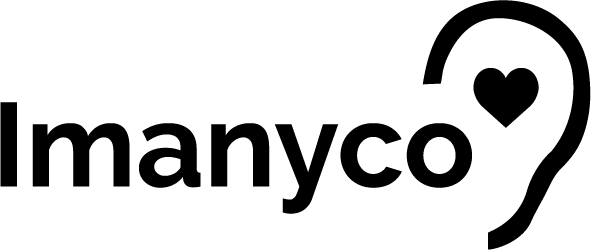Covid-19 Pandemic: Don’t Leave the Deaf Community Out of the Conversation
We’ve all been negatively affected by the COVID-19 pandemic, but few groups are affected more directly and profoundly than the deaf community.
Think about it: mandating masks to be worn by everyone in public heightens a deaf person’s already difficult barriers to communication. The deaf community relies on lip reading, facial expressions, body language, and other non-verbal cues to effectively communicate.
By covering everyone’s lips and mouth with a mask, the impact on the average hearing person is that it makes it harder to hear and understand what another person is saying—but the impact on a deaf person is severe, because it removes the opportunity to lip-read completely.
An article published by Today puts it this way:
“It’s hard to read lips or interpret signs when someone is wearing a mask—or when someone has a bad connection on Zoom. … Masks are a challenge: It is impossible to lip-read when someone is wearing one. (Clear masks may be one solution, although they’re not perfect.) Signing is affected, too, since the language is not simply about the signs the hands makes; it also relies on facial movements and expressions.”
Have you ever heard of “dinner table syndrome”? This is a name for the isolating phenomenon experienced by many deaf people in which they are excluded from the conversation of a group of hearing people.
“The dinner table, a symbol of family life and bonding in popular hearing culture, often represents loneliness and inaccessibility to deaf people,” explains a deaf person in a BBC article.
Unfortunately, dinner table syndrome has gotten worse in our virtual-centered world. While Zoom lags and glitches are annoying for all of us, they’re detrimental to the deaf community, who rely on being able to lip-read and catch non-verbal communication cues.
“Video conferencing platforms are actually just another dark bar, another dinner table. However, unlike the table at the pub, disengagement isn’t an option as the majority of our lives are now played out on screens,” the BBC article continues.
One obvious solution is for a hearing person to pull down their mask so a deaf person can read their lips. While that’s helpful for communication, it exposes the deaf community to greater risk of exposure to the coronavirus.
In addition, people may be hesitant to share a pen, hand over their phone, or be in close proximity to strangers during this time when we’re all supposed to limiting contact and keeping our distance to combat the spread of COVID-19.
Still, it’s vital that we keep the deaf community involved in the conversation throughout the pandemic—imagine how you would feel if overnight, your language was completely removed or impossible to use. That’s a taste of what the deaf community is experiencing during this time.
Here are some steps you can take to keep the lines of communication open with the deaf community during the COVID-19 pandemic:
Carry hand sanitizer or wipes that you can share if you need to hand a deaf person a pen (or your phone’s note section)
Consider wearing a clear mask if you expect to be around deaf people
If you have no option but to pull down your mask, stand at least six feet away while you talk and be willing to repeat yourself as necessary
Be willing chat online or in written form
Be patient—this situation is hard for all of us, but some have even greater challenges to overcome when going about their daily lives
Rephrase if what you’re saying isn’t clear the first time
Use Koda to simplify and streamline communication
If you are part of the deaf community, how has the COVID-19 pandemic affected you? What creative ways have you found to address the new communication barriers?
Special thanks to Skye Sherman.
